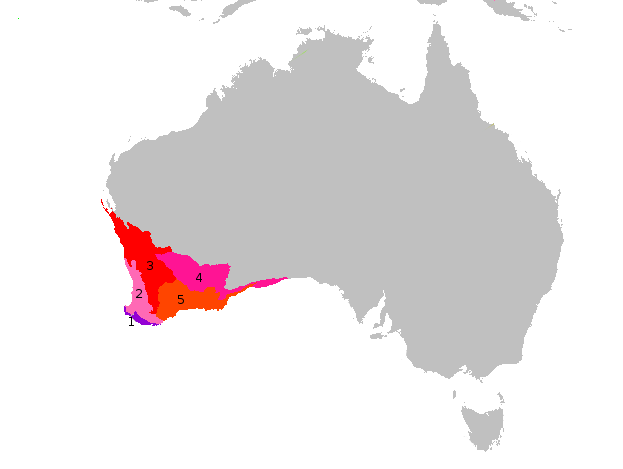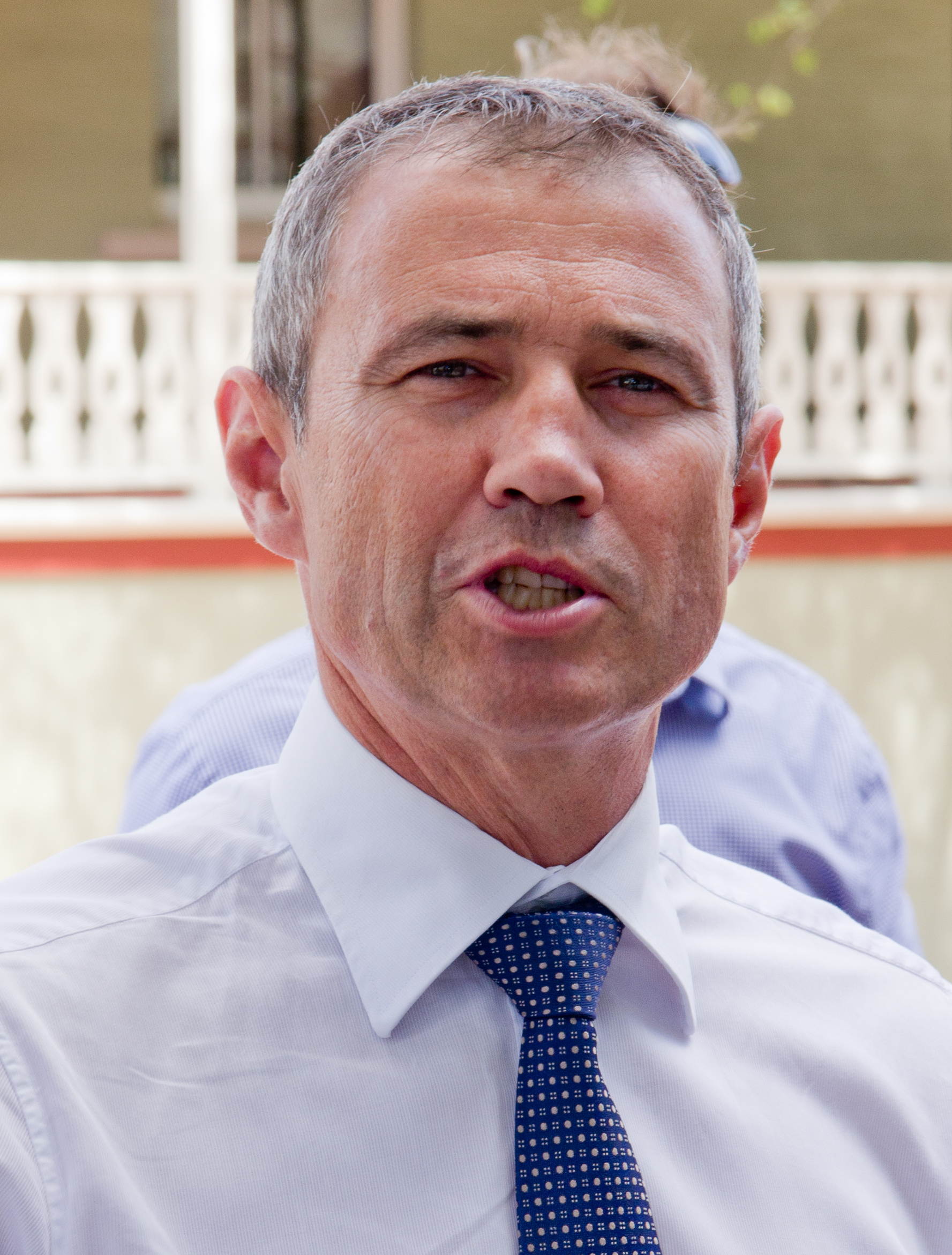|
Thysanotus Scaber
''Thysanotus scaber'' is a herbaceous perennial flowering plant with tall stems accompanied with a cluster of foliage underneath. This plant is endemic to the Southwest Australia. The flowers of this plant are bright mauve and there are 3 petals each decorated with fringed edges. Distribution ''Thysanotus scaber'' originates from Southwestern Australia, East of Perth. It is considered to distributed in the IBRA regions, Jarrah Forest and the Swan Coastal Plain. The Government of Western Australia's Department of Environment and Conservation considers the plants conservation code to be, "not threatened". Habitat and ecology ''Thysanotus scaber'' flourishes is a dry climate with low humidity. This plant grows in a region that has a Mediterranean climate with wet winters and dry summers. The native environment of the plant is Eucalypt woodlands. ''Thysanotus scaber'' is able to grow in soil that has excellent drainage, but is also able to grow in more sandy soil. However, if t ... [...More Info...] [...Related Items...] OR: [Wikipedia] [Google] [Baidu] |
Stephan Endlicher
Stephan Friedrich Ladislaus Endlicher, also known as Endlicher István László (24 June 1804 – 28 March 1849), was an Austrian Empire, Austrian botanist, numismatist and Sinologist. He was a director of the Botanical Garden of Vienna. Biography Endlicher studied theology and received minor orders. In 1828 he was appointed to the Österreichische Nationalbibliothek, Austrian National Library to reorganize its manuscript collection. Concurrently he studied natural history, in particular botany, and East-Asian languages. In 1836, Endlicher was appointed keeper of the court cabinet of natural history, and in 1840 he became professor at the University of Vienna and director of its Botanical Garden of the University of Vienna, Botanical Garden. He wrote a comprehensive description of the plant kingdom according to a natural system, at the time its most comprehensive description. As proposed by Endlicher, it contained images with text. It was published together with the reissue of ... [...More Info...] [...Related Items...] OR: [Wikipedia] [Google] [Baidu] |
Herbaceous
Herbaceous plants are vascular plants that have no persistent woody stems above ground. This broad category of plants includes many perennials, and nearly all annuals and biennials. Definitions of "herb" and "herbaceous" The fourth edition of the '' Shorter Oxford English Dictionary'' defines "herb" as: # "A plant whose stem does not become woody and persistent (as in a tree or shrub) but remains soft and succulent, and dies (completely or down to the root) after flowering"; # "A (freq. aromatic) plant used for flavouring or scent, in medicine, etc.". (See: Herb) The same dictionary defines "herbaceous" as: # "Of the nature of a herb; esp. not forming a woody stem but dying down to the root each year"; # "BOTANY Resembling a leaf in colour or texture. Opp. scarious". Botanical sources differ from each other on the definition of "herb". For instance, the Hunt Institute for Botanical Documentation includes the condition "when persisting over more than one growing season, the ... [...More Info...] [...Related Items...] OR: [Wikipedia] [Google] [Baidu] |
Perennial
In horticulture, the term perennial ('' per-'' + '' -ennial'', "through the year") is used to differentiate a plant from shorter-lived annuals and biennials. It has thus been defined as a plant that lives more than 2 years. The term is also loosely used to distinguish plants with little or no woody growth (secondary growth in girth) from trees and shrubs, which are also technically ''perennials''. Notably, it is estimated that 94% of plant species fall under the category of perennials, underscoring the prevalence of plants with lifespans exceeding two years in the botanical world. Perennials (especially small flowering plants) that grow and bloom over the spring and summer, die back every autumn and winter, and then return in the spring from their rootstock or other overwintering structure, are known as herbaceous perennials. However, depending on the rigours of the local climate (temperature, moisture, organic content in the soil, microorganisms), a plant that is a peren ... [...More Info...] [...Related Items...] OR: [Wikipedia] [Google] [Baidu] |
Endemism
Endemism is the state of a species being found only in a single defined geographic location, such as an island, state, nation, country or other defined zone; organisms that are indigenous to a place are not endemic to it if they are also found elsewhere. For example, the Cape sugarbird is found exclusively in southwestern South Africa and is therefore said to be ''endemic'' to that particular part of the world. An endemic species can also be referred to as an ''endemism'' or, in scientific literature, as an ''endemite''. Similarly, many species found in the Western ghats of India are examples of endemism. Endemism is an important concept in conservation biology for measuring biodiversity in a particular place and evaluating the risk of extinction for species. Endemism is also of interest in evolutionary biology, because it provides clues about how changes in the environment cause species to undergo range shifts (potentially expanding their range into a larger area or b ... [...More Info...] [...Related Items...] OR: [Wikipedia] [Google] [Baidu] |
Southwest Australia
Southwest Australia is a biogeographic region in Western Australia. It includes the Mediterranean-climate area of southwestern Australia, which is home to a diverse and distinctive flora and fauna. The region is also known as the Southwest Australia Global Diversity Hotspot. Geography The region includes the Mediterranean forests, woodlands, and scrub ecoregions of Western Australia. The region covers 356,717 km2, consisting of a broad coastal plain 20–120 kilometres wide, transitioning to gently undulating uplands made up of weathered granite, gneiss and laterite. Bluff Knoll in the Stirling Range is the highest peak in the region, at 1,099 metres (3,606 ft) elevation. Desert and xeric shrublands lie to the north and east across the centre of Australia, separating Southwest Australia from the other Mediterranean and humid-climate regions of the continent. Climate The region has a wet-winter, dry-summer Mediterranean climate, one of five such regions in the worl ... [...More Info...] [...Related Items...] OR: [Wikipedia] [Google] [Baidu] |
IBRA Regions
The Interim Biogeographic Regionalisation for Australia (IBRA) is a biogeography, biogeographic regionalisation of Australia developed by the Australian government's Department of Sustainability, Environment, Water, Population and Communities (Australia), Department of Sustainability, Environment, Water, Population, and Communities. It was developed for use as a planning tool, for example for the establishment of a national Reserve System, national reserve system. The first version of IBRA was developed in 1993–94 and published in 1995. Within the broadest scale, Australia is a major part of the Australasia Australasian realm, biogeographic realm, as developed by the World Wide Fund for Nature. Based on this system, the world is also split into Biome#Olson & Dinerstein (1998) biomes for WWF / Global 200, 14 terrestrial habitats, also called biomes, of which eight are shared by Australia. The Australian land mass is divided into 89 bioregions and 419 Terrestrial ecoregion, subr ... [...More Info...] [...Related Items...] OR: [Wikipedia] [Google] [Baidu] |
Government Of Western Australia
The Government of Western Australia is the States and territories of Australia, Australian state democratic administrative authority of Western Australia. It is also commonly referred to as the WA Government or the Western Australian Government. The Government of Western Australia, a parliamentary system, parliamentary constitutional monarchy, was formed in 1890 as prescribed in its State constitutions in Australia, Constitution, as amended from time to time. Since the Federation of Australia, Federation of Australia in 1901, Western Australia has been a state of the Australian Government, Commonwealth of Australia, and the Constitution of Australia regulates its relationship with the Commonwealth. Under the Australian Constitution, Western Australia ceded legislative and judicial supremacy to the Commonwealth, but retained powers in all matters not in conflict with the Commonwealth. History Executive and judicial powers Western Australia is governed according to the princip ... [...More Info...] [...Related Items...] OR: [Wikipedia] [Google] [Baidu] |
Department Of Environment And Conservation (Western Australia)
The Department of Environment and Conservation (DEC) was a department of the Government of Western Australia that was responsible for implementing the state's conservation and environment legislation and regulations. It was formed on 1 July 2006 by the amalgamation of the Department of Environment and the Department of Conservation and Land Management. The DEC was separated on 30 June 2013 forming the Department of Parks and Wildlife (DPaW) and the Department of Environment Regulation (DER), which both commenced operations on 1 July 2013. On 1 July 2017 the DER amalgamated with the Department of Water and the Office of the Environmental Protection Authority, to become the Department of Water and Environmental Regulation, while DPaW was merged with other agencies to form the Department of Parks and Wildlife. Status (at dissolution, 30 June 2013) The department was managing more than 285,000 km2, including more than nine per cent of WA's land area: its national parks, ... [...More Info...] [...Related Items...] OR: [Wikipedia] [Google] [Baidu] |
Declared Rare And Priority Flora List
The Declared Rare and Priority Flora List is the system by which Western Australia's conservation flora are given a priority. Developed by the Government of Western Australia's Department of Environment and Conservation, it was used extensively within the department, including the Western Australian Herbarium The Western Australian Herbarium is the state Herbarium, situated in Perth, the capital of Western Australia. It houses a collection of more than 845,000 dried specimens of plants, algae, bryophytes (mosses, liverworts and hornworts), lichens, fu .... The herbarium's journal, '' Nuytsia'', which has published over a quarter of the state's conservation taxa, requires a conservation status to be included in all publications of new Western Australian taxa that appear to be rare or endangered. The system defines six levels of priority taxa: ;X: Threatened (Declared Rare Flora) – Presumed Extinct Taxa: These are taxa that are thought to be extinct, either because they have n ... [...More Info...] [...Related Items...] OR: [Wikipedia] [Google] [Baidu] |
Mediterranean Climate
A Mediterranean climate ( ), also called a dry summer climate, described by Köppen and Trewartha as ''Cs'', is a temperate climate type that occurs in the lower mid-latitudes (normally 30 to 44 north and south latitude). Such climates typically have dry summers and wet winters, with summer conditions being hot and winter conditions typically being mild. These weather conditions are typically experienced in the majority of Mediterranean-climate regions and countries, but remain highly dependent on proximity to the ocean, altitude and geographical location. The dry summer climate is found throughout the warmer middle latitudes, affecting almost exclusively the western portions of continents in relative proximity to the coast. The climate type's name is in reference to the coastal regions of the Mediterranean Sea, which mostly share this type of climate, but it can also be found in the Atlantic portions of Iberia and Northwest Africa, the Pacific portions of the United States ... [...More Info...] [...Related Items...] OR: [Wikipedia] [Google] [Baidu] |
Monoecious
Monoecy (; adj. monoecious ) is a sexual system in seed plants where separate male and female cones or flowers are present on the same plant. It is a monomorphic sexual system comparable with gynomonoecy, andromonoecy and trimonoecy, and contrasted with dioecy where individual plants produce cones or flowers of only one sex and with bisexual or hermaphroditic plants in which male and female gametes are produced in the same flower. Monoecy often co-occurs with anemophily, because it prevents self-pollination of individual flowers and reduces the probability of self-pollination between male and female flowers on the same plant. Monoecy in Flowering plant, angiosperms has been of interest for evolutionary biologists since Charles Darwin. Terminology Monoecious comes from the Greek words for one house. History The term monoecy was first introduced in 1735 by Carl Linnaeus. Darwin noted that the flowers of monoecious species sometimes showed traces of the opposite sex function, ... [...More Info...] [...Related Items...] OR: [Wikipedia] [Google] [Baidu] |





